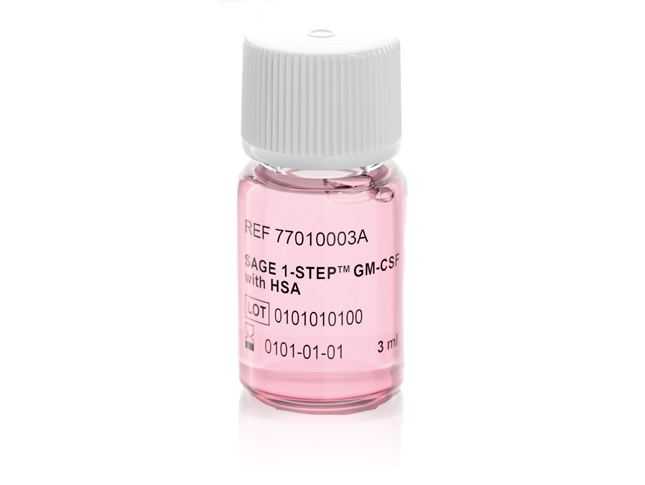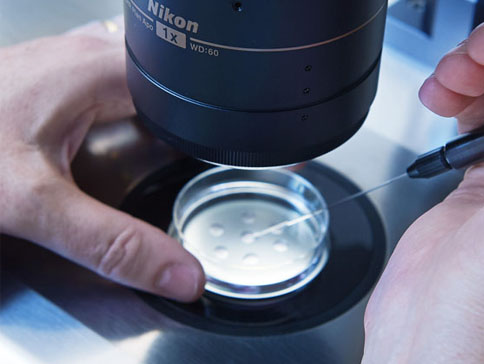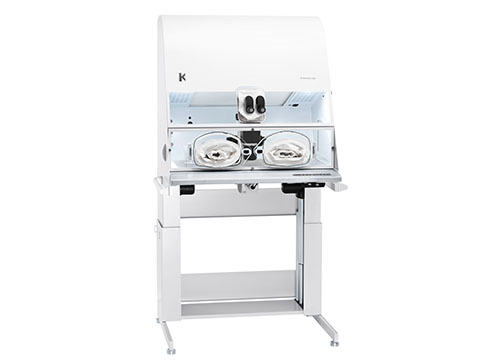
The modern infertility patient is long familiar with Preimplantation Genetic Testing (PGT), with one of the most common types of testing PGT-A (PGT for Aneuploidies).
PGT-A is used to examine embryos during the IVF process prior to transfer and identify genetic abnormalities, known as aneuploidy. Aneuploidy occurs when an abnormal number of chromosomes — either too few or too many — is detected in the embryo. An abnormal number of chromosomes can lead to failed pregnancies or genetic syndromes. Through the testing biopsied cells from the embryo, PGT-A can help reduce the chances of transferring an embryo that is likely to fail to implant or lead to challenging clinical outcomes or serious medical conditions.
PGT-A was first successfully used over 30 years ago. Clinicians administered PGT-A at Hammersmith Hospital in London in 1990 to prevent a genetic disorder from passing from a carrier parent to their child— forever changing the landscape of Assisted Reproductive Technology (ART). Prior to 1990, intended parents (IPs) with genetic conditions had few options to avoid passing them on to their children.
Since its introduction, PGT-A has evolved to become a widespread and standard option during the IVF process. Patients have benefited from improved embryo selection and a decreased need to transfer multiple embryos.
In recent years, increased innovation has fueled exciting discoveries in the world of ART. In 2022, CooperSurgical® pioneered the next level of genetic testing: PGT-CompleteSM. PGT-Complete advances beyond standard aneuploidy testing, providing a new level of care with the most clinically comprehensive insights.
What are the benefits of PGT-Complete?
1. Empowering patients, helping to safeguard embryos
CooperSurgical’s PGT-Complete is a four-in-one genetic test, which includes PGT-A, to improve the chances of IVF success. PGT-Complete uses the same cells as PGT-A and unlocks more information.
Kristine McWilliams, Medical Director of Genomics at CooperSurgical, shares, “Labs like ours receive a small number of sampled cells from a growing embryo at the IVF clinic for PGT-A testing. We realized that there is a lot more information that those cells can give us, and that really is the reason for PGT-Complete – to be able to find and communicate additional information from the exact same cells used in PGT-A. There is a lot of additional information we can unlock.”
McWilliams explains, “It’s hard to summarize the benefits all into one but from my perspective and working with IVF patients, they want to know as much as they can know. This test goes a long way to provide them with as much information as possible. And information is power.”
2. Confirmation of Parentage
The IVF journey is often long, hard, and unpredictable. Though it’s rare, the last thing any patient wants is an unfortunate, unforeseen mix-up.
PGT-Complete provides confirmation of parentage (Parental-QC-IconParental QC). A typical PGT-A is run with just the sampled cells from the embryo. For PGT-Complete, CooperSurgical receives buccal (cheek) swabs of the egg and sperm contributors. The DNA in their saliva provides additional cells to directly compare against the embryo.
This step provides another point of verification and assurance that the intended egg and sperm were used and can help reduce parental anxiety of potential mix-ups.
3. Double-Check Embryos Before Excluding: Genetic Pronuclei Check
While PGT-A is known for identifying embryos to exclude in the process before transfer, PGT-Complete adds an extra layer of evaluation to help ensure no viable embryos are discarded. For today’s patient, the comfort that this assurance brings is hard to measure.
Angela Wrubleski, infertility warrior and advocate with the pregnantish community, shares: “Any advancements in fertility testing are unbelievably important as we spend a lot of time, money, and work to create each and every embryo that the more information we have to ensure success is welcomed.”
Most IVF labs conduct a Genetic Pronuclei (PN) Check as part of their protocol. A PN check looks at the egg early on after fertilization, checking for evidence of correct fertilization. Once inside the egg, the sperm head swells and forms a structure called a ‘pronucleus.’ If functioning well, the egg will respond by completing maturation and creating a second pronucleus. Ideally, the PN check will show PN 1 and 2, representing that DNA of the egg and sperm have come together and completed a first division, resulting in the right amount of DNA needed to create a new individual.
If two pronuclei are not observed during a PN check, it is assumed that normal fertilization has not occurred. PGT-Complete’s PN Check gives the capability to identify and rescue true viable embryos from those that may look abnormal, to confidently enable additional euploid embryo transfers.
McWilliams shares, “What we know now is that sometimes, when you look early on at embryos and there’s just 1 PN, sometimes the 2nd one is hiding directly underneath, and you just can’t see it in the microscope. Bottom line is, the embryos that look unhealthy are sometimes healthy. So PGT-Complete allows embryologists to potentially consider letting some abnormal embryos continue to grow and also biopsy them for PGT-A testing. Sometimes we can use PGT-Complete testing to include embryos, rather than always excluding them.”
4. Parent of Origin of Aneuploidy
PGT-Complete supports the clinic and patient by identifying the origin of abnormality, which can help guide future decisions for IP’s and clinicians.
If the embryo cells do showcase a chromosomal abnormality, PGT-Complete is able to show which gamete contributor the abnormality came from.
Research tells us that aneuploidy increases with maternal age, and therefore it may be suggested to the IP to use a donor.
PGT-Complete can confirm exactly where the aneuploidy is coming from, providing more confirmation and assurance to guide future decisions.
McWilliams explains, “This kind of information can help families avoid a very unfortunate circumstance where they may decide to use an egg donor, not realizing their aneuploidy was actually coming from the sperm. PGT-Complete provides an extra layer of security.”
Who is PGT-CompleteSM good for?
It’s hard to imagine a scenario where an IP and today’s fertility clinic laboratory wouldn’t benefit from the PGT-Completetest.
PGT-Complete may be a good fit for anyone concerned about confirming parentage, interested in PN checking, or with a history of pregnancy loss.
“We’d say that anyone who is already going through PGT-A should be made aware of PGT-Complete as well. We can unlock so much more from this,” McWilliams shares.
When it comes to your fertility, knowledge and information about what may improve your chances of pregnancy are powerful tools. PGT-CompleteSM testing can help empower families to help them achieve their dreams.

Sources
https://www.ncbi.nlm.nih.gov/pmc/articles/PMC7812490
https://sharinghealthygenes.com/the-history-of-pgd/
https://www.nytimes.com/2022/04/20/health/pgta-ivf-pregnancy-test.html
https://www.pfcla.com/blog/preimplantation-genetic-screening-pgs-pros-and-cons
https://www.pacificfertilitycenter.com/blog/abnormal-fertilization









